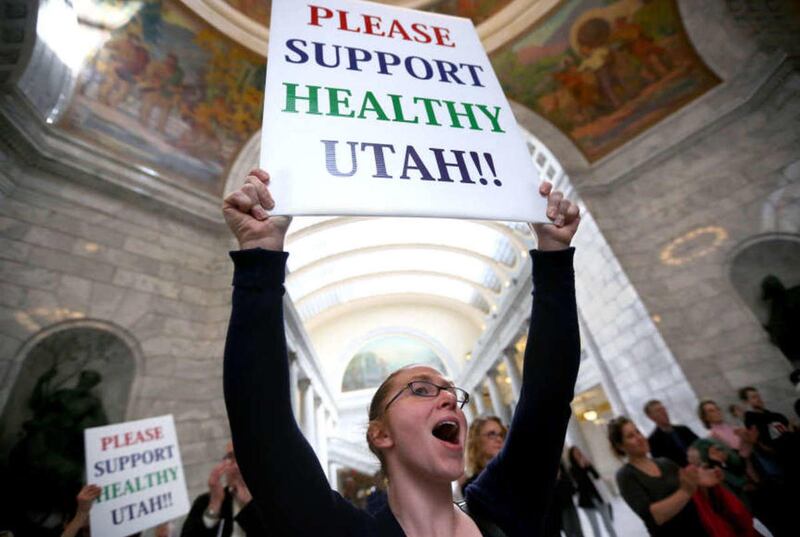As the governor and legislative leadership go back to the drawing board on Medicaid expansion, I thought it a good idea to frame the discussion from a conservative perspective and explain why I voted against Healthy Utah.
There are many reasons for my “no” vote, but three primary reasons stand out and must be resolved for me to ever support such a proposal.
Reason 1: 10 percent of what, exactly?
As part of their approval of Healthy Utah, the feds mandated that we not cap or limit the amount of money the program could expend or the number of people who might qualify. Healthy Utah would provide health coverage for anyone falling in the coverage gap, as well as a portion who are currently eligible for the federal exchanges.
The feds want states to expand without respect to program size or cost; in order to entice them to do so, feds have offered to pay 100 percent through 2016. After this point, the state takes on an increasing share until 2020, when we would be on the hook for 10 percent.
Without a defined limit on either the cost or number of participants, state lawmakers are unable to adequately budget reliably, and with a constitutional mandate to balance the budget, tremendous uncertainty is inserted into the process.
This ultimately causes problems for states, which operate with finite resources, and such an expansive, new, open-ended entitlement program should cause fiscal conservatives to cringe.
Reason 2: The 10 percent split is not guaranteed
With the feds covering 70 percent of our existing Medicaid program, Utah currently enjoys one of the best state/federal cost splits in the nation. This split has been modified from time to time and dictated by the feds with absolutely no state input.
Last March, Rep. Paul Ryan indicated to our state House leadership that the 10 percent proposed match would not be reliable, and the budgetary pressures on Congress would likely lead to a modification.
State lawmakers have tried to determine the financial impacts of this program, but it is like taking aim at a moving target. The “no cap” federal requirement alone makes it unreasonable to think we can project costs with any sort of reliability. To then add the additional uncertainty of the federal match moves the prospect of a viable expansion program from nearly impossible into the realm of financial insanity.
Reason 3: Where will the money come from?
There really are only two possible ways to come up with the money for expansion: (1) Take it from somewhere else in our budget, most likely education or other social services; (2) raise taxes.
I, for one, cannot support taking money from existing programs, and raising taxes to fund a new entitlement simply won’t pass in this conservative state. So, where will the money come from?
It is not likely that the feds can sustain their 90 percent match. The governor tried to propose a new $20 million tax on hospitals to help the state, but that idea was quickly shot down.
So I ask again, where is the money going to come from?
If we cannot answer these questions, then I believe we need to have a discussion about not expanding Medicaid, and put this issue to bed once and for all, as many other states have done. If we can answer these questions satisfactorily and get buy-in from the feds on necessary revisions, we then need a serious discussion about the merits and costs of this revised program. This is a discussion I am most willing to have, but until these concerns can be adequately resolved, I will not be voting for Healthy Utah or any modification in the future.
Rep. Jake Anderegg represents state House District 6, which covers Lehi and Saratoga Springs.

